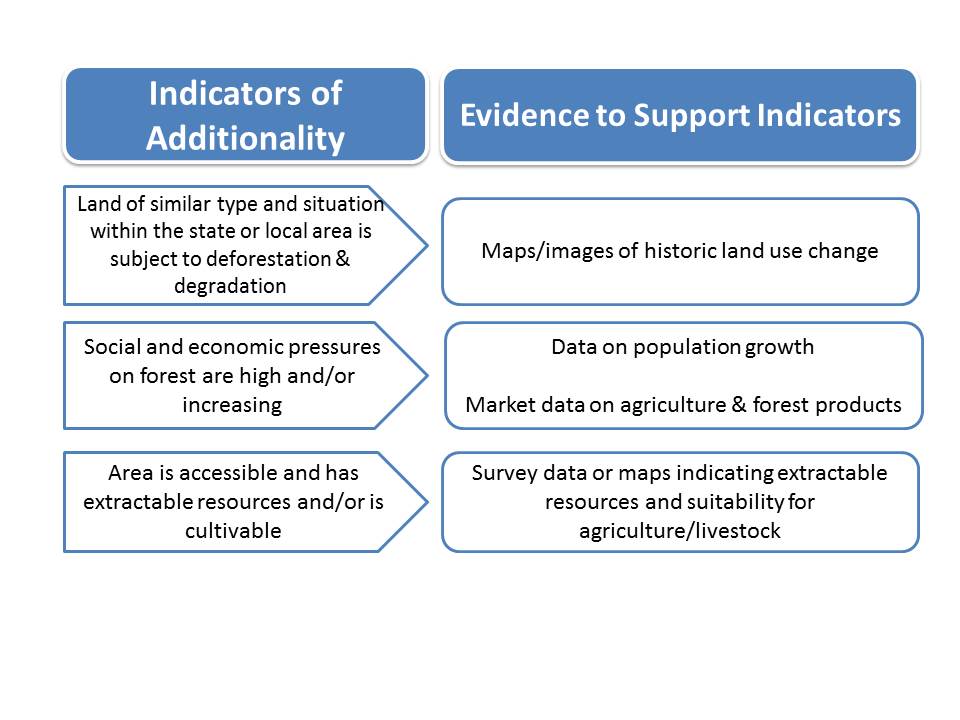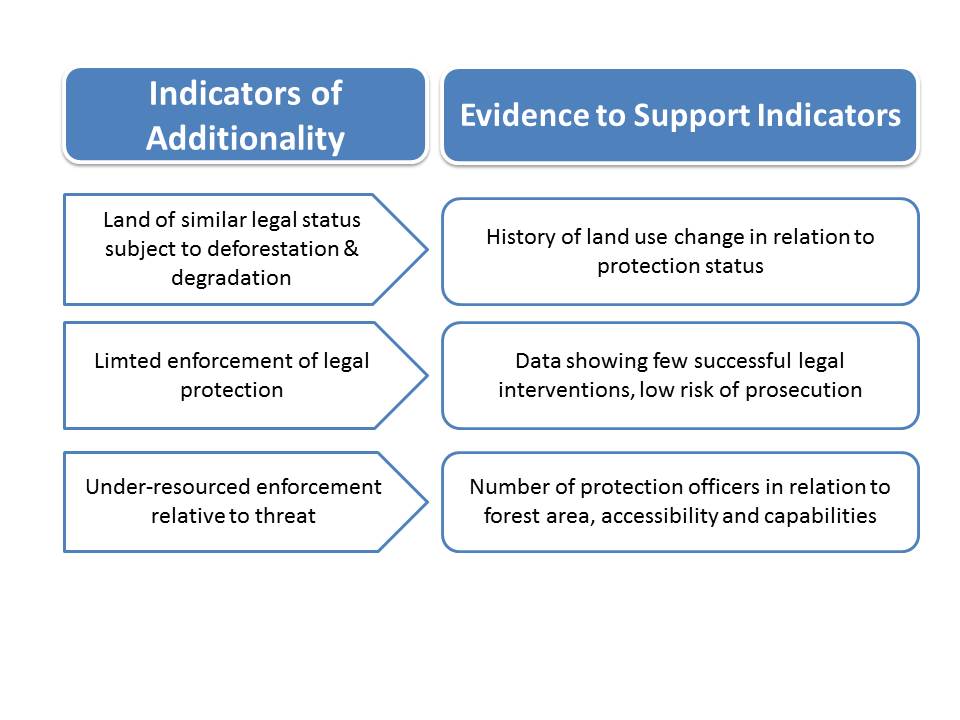Can the project demonstrate additionality?
Projects activities should be considered additional if they are taking place as a consequence of the existence of the NFS standard or the possibility of obtaining carbon finance, and would not have taken place in its absence.
Additionality
Additionality describes the extent to which activities, and resulting outcomes, occur as a consequence of an intervention, such as the resource flows generated from carbon certificates, made possible by the existence of a standard and market for certificates.
A proposed activity is additional if the activity occurs as a consequence of the application of the NFS (Gillenwater 2012). The activity must be taking place as a result of the NFS, and would not have taken place in the baseline situation – defined as the absence of the Standard.
The definition of additionality often seen in other standards – ‘would the activities have taken place in the absence of the project?’ – is not sufficient; the activities of a project are indistinguishable from the existence of the project, so framing the question in this way produces a meaningless answer. (Gillenwater 2012)
In cases where forest is not legally protected the following indicators may be used to demonstrate additionality, and the corresponding evidence should be provided to support each indicator.
 In cases where forests are officially protected or subject to protective regulations additionality may be demonstrated by showing that forests are inadequately protected and at risk of deforestation and degradation. In cases where legal protections on forests exist, the following indicators and evidence may be used to demonstrate that the existing protection measures are not sufficient to address the threats to forests, in addition to those above.
In cases where forests are officially protected or subject to protective regulations additionality may be demonstrated by showing that forests are inadequately protected and at risk of deforestation and degradation. In cases where legal protections on forests exist, the following indicators and evidence may be used to demonstrate that the existing protection measures are not sufficient to address the threats to forests, in addition to those above.
 In addition to demonstrating current and future threats to forests, the project proponent should explain how the planned intervention of the project will mitigate the identified threats.
In addition to demonstrating current and future threats to forests, the project proponent should explain how the planned intervention of the project will mitigate the identified threats.
In the case of forest restoration activities, the project developer and verifier should confirm that these are not being undertaken to fulfil a legal requirement.
Verifiers should be satisfied that the project developer has not manipulated local agents or institutions to increase the level of threat to any forest area in order to make a case for additionality.
References
Gillenwater, 2012.What is additionality? Part 1: A Long Standing Problem: Greenhouse Gas Management Institute, Silver Spring, MD. Available at:https://ghginstitute.org/wp-content/uploads/content/GHGMI/AdditionalityPaper_Part-1(ver3)FINAL.pdf
